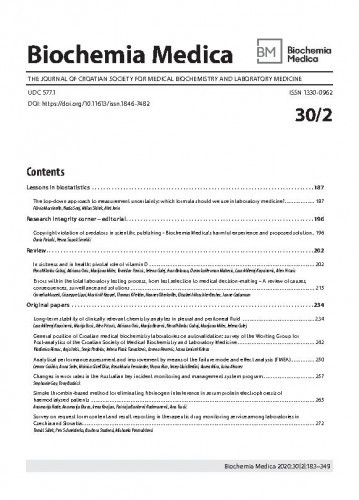Within the last several years, frequency of vitamin D testing has multiplied substantially all over the world, since it has been shown to have an important role in many diseases and conditions. Even though liquid chromatography - tandem mass spectrometry (LC-MS/MS) has been identified as “gold standard” method for vitamin D measurement, most laboratories still use immunochemistry methods. Besides analytical problems (hydrophobicity, low circulating concentrations, ability to bind to lipids, albumins and vitamin D binding protein, presence of multiple vitamin D metabolites and variable ratios of 25(OH)D2 and 25(OH)D3 in the blood), vitamin D shows great preanalytical variability, since its concentration is drastically influenced by seasonal changes, exposure to sun, type of clothes or sun block creams. Vitamin D is mostly measured in serum or plasma, but new studies are showing importance of measuring vitamin D in pleural effusions, breast milk, urine, synovial fluid and saliva. Besides the main role in calcium homeostasis and bone metabolism, many studies linked vitamin D deficiency with cancer, cardiovascular diseases, diabetes, fertility and many other conditions. However, even though initial observational studies indicated that supplementation with vitamin D might be beneficial in disease development and progression; first results of well-designed randomized controlled prospective studies did not find differences in frequency of cardiovascular events or invasive cancer between patients taking vitamin D supplementation compared to placebo. In the light of these recent findings, validity of excessive vitamin D testing remains an open question.
Sažetak

 Biochemia medica : the journal of Croatian Society for Medical Biochemistry and Laboratory Medicine : 30,2(2020) / glavna i odgovorna urednica Daria Pašalić.
Biochemia medica : the journal of Croatian Society for Medical Biochemistry and Laboratory Medicine : 30,2(2020) / glavna i odgovorna urednica Daria Pašalić.